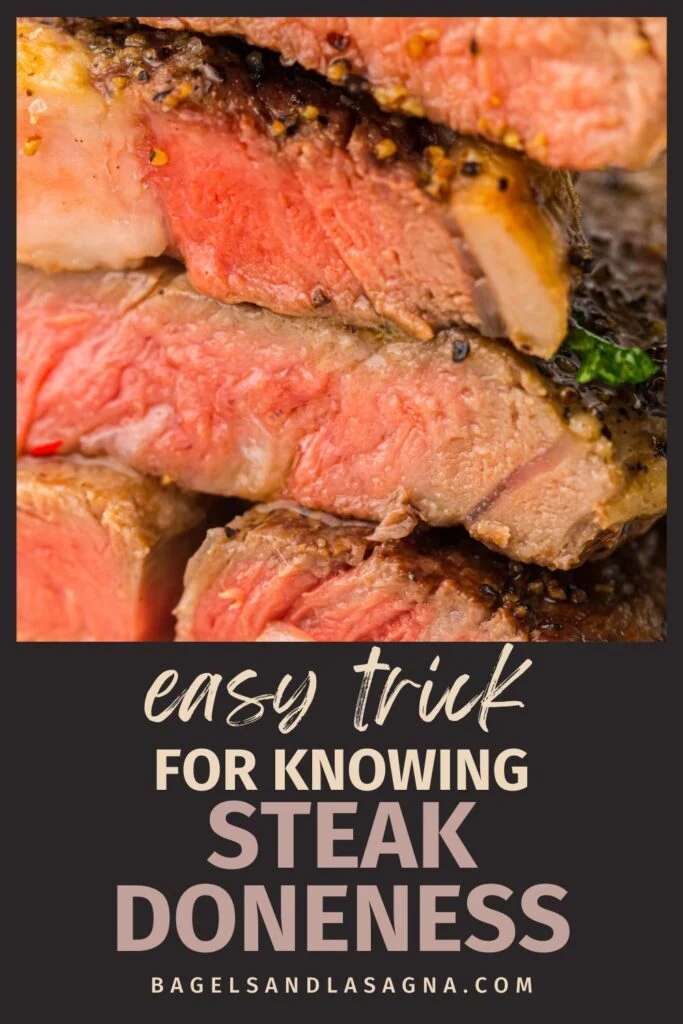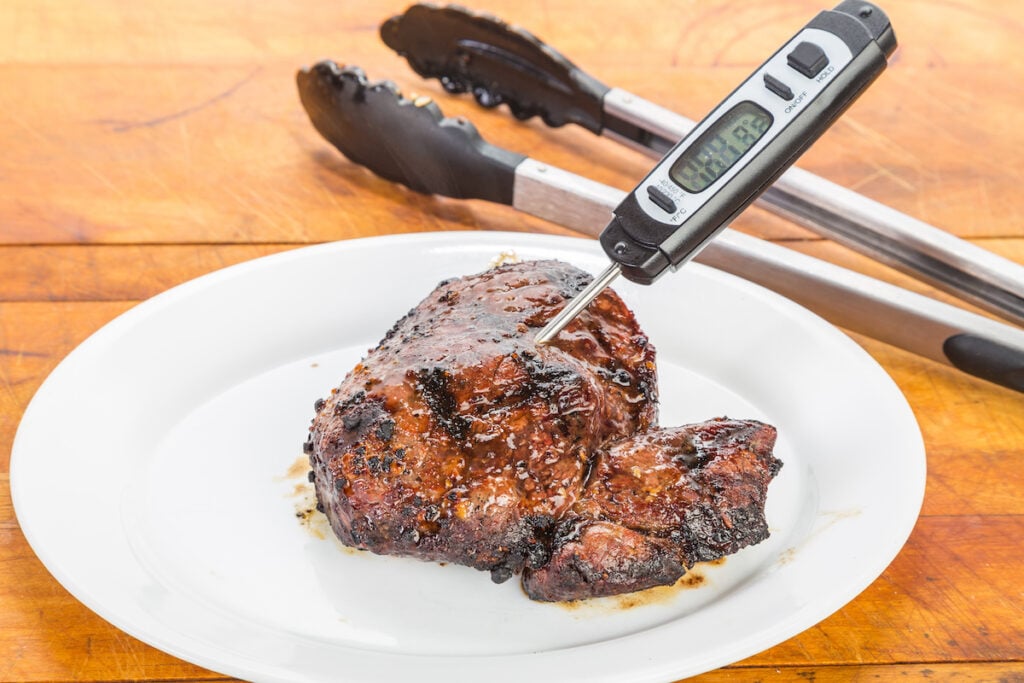Steak Doneness Guide
Have you ever wondered how to achieve that perfect juicy, tender and flavorful steak? It all comes down to temperature and steak doneness. With this guide, the next time you grill a steak on a charcoal grill or sear steak on a griddle, it will turn out perfectly.
In this sizzling steak temperature guide, learn the difference between rare, medium-rare, medium, medium-well and well-done to discover the secrets to cooking your perfect steak to your desired degree of doneness.

USDA safety considerations
This page may contain affiliate links, which means I may be compensated if you click a link. However, there is no cost to you. Also, as an Amazon Associate, I earn from qualifying purchases. For more info, please see my Privacy and Disclosure page.
Before breaking down different steak doneness levels, it’s important to consider the USDA recommended temperature for cooked steak.
They advise cooking raw beef, including steak, to an internal target temperature of 145 F with a 3-minute resting period. This is considered the safe minimum internal temperature to prevent foodborne illness. They also recommend using a digital thermometer to get the most accurate temperature reading.
Restaurants around the U.S. offer steaks cooked below 145 F. To do so, the FDA requires them to include a consumer advisory statement on their menus about the risks of eating raw or undercooked items.
So why do restaurants offer steaks cooked below what the USDA recommends? Because steaks cooked to medium-rare or rare have a more enjoyable mouthfeel, taste and texture for many diners. Plus, the restaurants are confident in the safety protocols followed while sourcing their meat.
If you plan to cook your steak at home below the USDA recommended temperature of 145 F, be sure to choose beef from a quality meat source. Then, season it with a good steak rub and cook it in a skillet or on a grill or griddle.
If you’re concerned about going below that temperature or you fall into the high-risk category, you can also obtain great tenderness, juiciness and flavor by cooking beef that’s graded USDA prime. Certain cattle breeds like Angus and Wagyu are also known for more marbling and better tenderness.

Steak Doneness Levels
Some experienced chefs can tell a steak’s doneness by feeling it. If you press on the steak, the proteins will be looser the rarer it is. As it cooks, the steak will become firm. We’re big fans of the FOX cooking competition show “Next Level Chef.” We’ve seen Gordon Ramsay use this touch-test technique when advising competitors if their meat is raw or overcooked.
The most accurate way to measure the internal temperature of a steak is to use an instant-read thermometer. While the steak is cooking, insert the meat thermometer through the side into the center of your steak. Make sure the tip of the thermometer is surrounded by meat. If it touches bone, gristle or fat, the temperature can be skewed.
I recommend you use a meat thermometer to check the doneness of the meat on any of our recipes including air fryer ribeye steak, steak in the air fryer and copycat rotisserie chicken.
Steak Temperature Chart
Here is a bulleted list aka a chart that explains the different doneness of a steak, based on the temperature you’ve cooked it at. It also provides visual clues as well as the mouthfeel of the steak when cutting into it.
Blue steak
- Temperature: 115-120 F
- Color: Bluish-red inside with a quick thin sear outside
- Tenderness: Can be chewy depending on the cut
Rare steak
- Temperature: 120-125 F
- Color: Bright red center with slight char on the outside
- Tenderness: Very soft
Medium-rare steak
- Temperature: 130-135 F
- Color: Warm red center with more browning on the edges
- Tenderness: Evenly soft and tender
Medium steak
- Temperature: 135-145 F
- Color: Light pink center with a thicker ring of brown
- Tenderness: Soft in the center with firm edges
Medium-well steak
- Temperature: 145-155 F
- Color: Light brown with a touch of pink in center
- Tenderness: Stiff
Well-done steak
- Temperature: 155 F plus
- Color: Brown all the way through
- Tenderness: Firm and chewy
Resting and carryover cooking
Once the meat is removed from the heat, the steak will continue to cook. This is called carryover cooking. To compensate for carryover cooking, remove your steak from the heat when it is a few degrees below your desired temperature.
Also, another tip we’ve picked up from “Next Level Chef” is letting the meat rest. We’ve learned that if you cut into a piece of meat as soon as it comes off the heat, then all of the delicious juices will run out. This can leave your steak dry and make it lose its flavor.
Final thoughts
The next time you’re cooking steak, consider these tips and cook to your desired temperature. If you source great quality beef and don’t fall into a high-risk category, try cooking it to medium-rare for a flavorful steak that is guaranteed to be juicy and tender.
Now that you’ve mastered cooking steak, learn how to grill the perfect burger on a gas, charcoal or pellet grill. Also, you can try cooking steak in the air fryer. It works really well.
Portions of this article originally appeared on Food Drink Life.

